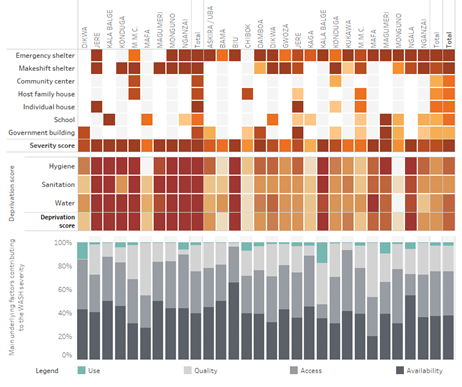DTM for Languages
DTM worked with Clear Global/Translators Without Borders (TWB) to identify information needed on languages that DTM can collect through the methodologies that DTM field teams use.
Information on Languages that all sectors commonly need are included in the DTM Field Companion for Languages, formatted as a Data Analysis Plan: it includes suggested phrasing of questions and options for reply as well as descriptive analysis and possible use of data for each information need.
DTM Field Companion for Languages is available in EXCELand in PDF. In the pdf version, one information need is detailed in each page, while in the excel version, one information need is detailed in each row. The information is identical on both versions.
DTM and TWB also jointly recorded a webinar to help DTM and other colleagues in the field 1) identify and collect the information they need to communicate with affected people and 2) design a language-informed data collection: Data for Languages and Languages for Data
Country-specific information on languages is available on the Clear Global Website, as TWB is supporting organizations to develop language-informed programs and communication strategies through language data research and analysis: https://translatorswithoutborders.org/language-data/
Available Tools:
- DTM Field Companions include specific information needs that Global experts identified for most sectors: https://dtm.iom.int/dtm-partners-toolkit/field-companion-sectoral-questions-location-assessmentt. Field companion for Languages is available in two formats:
- PDF (one page one question): https://dtm.iom.int/dtm-partners-toolkit/field-companion-pdf,
- EXCEL (one row one question): https://dtm.iom.int/dtm-partners-toolkit/field-companion-excel
- Video Data for Languages and Languages for Data: https://youtu.be/QDGW8GReh_M
- Practical information on the various languages used in each country: https://translatorswithoutborders.org/language-data-by-country/
- Recommended questions on languages developed by TWB with IOM DTM, REACH and UNICEF using three main methods of data collection (Interviews with Key Informants, Household, Individuals): https://clearglobal.org/language-questions/


